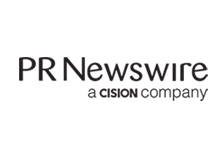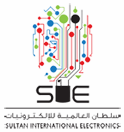Medical Fabrics Market to grow by USD 1.16 Billion from 2024-2028, driven by rising hygiene and infection control awareness and AI's impact on market trends - Technavio
NEW YORK, Oct. 28, 2024 /PRNewswire/ -- Report on how AI is redefining market landscape - The global medical fabrics market size is estimated to grow by USD 1.16 billion from 2024-2028, according to Technavio. The market is estimated to grow at a CAGR of 6.5% during the forecast period. Increased awareness regarding hygiene and infection control is driving market growth, with a trend towards increased use of smart fabrics in healthcare sector. However, fluctuating crude oil prices poses a challenge.Key market players include 3M Co., Ahlstrom, Asahi Kasei Corp., ATEX Technologies Inc., Berry Inc., Cardinal Health Inc., Carnegie Fabrics LLC., DuPont de Nemours Inc., Eximius Innovative Pvt. Ltd, Fibertex Nonwovens AS, Freudenberg and Co. KG, Kimberly Clark Corp., MillerKnoll Inc., Milliken and Co., Owens and Minor Inc., Paramount Tech Fab Industries., Precision Fabrics Group Inc., Sioen Industries NV, Toray Textiles Europe Ltd, and W.Ball and Son Ltd..
AI-Powered Market Evolution Insights. Our comprehensive market report ready with the latest trends, growth opportunities, and strategic analysis- View your snapshot now
Forecast period
2024-2028
Base Year 2023
Historic Data
2018 - 2022
Segment Covered Type (Synthetic fabrics, Hybrid fabrics, and Natural fabrics), Application (Wound care, Surgical fabrics,
Incontinence products, Implants and prosthetics, and Others), and Geography (APAC, North America, Europe, South
America, and Middle East and Africa)
Region Covered
APAC, North America, Europe, South America, and Middle East and Africa
Key companies 3M Co., Ahlstrom, Asahi Kasei Corp., ATEX Technologies Inc., Berry Global Inc., Cardinal Health Inc., Carnegie
profiled Fabrics LLC., DuPont de Nemours Inc., Eximius Innovative Pvt. Ltd, Fibertex Nonwovens AS, Freudenberg and Co. KG,
Kimberly Clark Corp., MillerKnoll Inc., Milliken and Co., Owens and Minor Inc., Paramount Tech Fab Industries.,
Precision Fabrics Group Inc., Sioen Industries NV, Toray Textiles Europe Ltd, and W.Ball and Son Ltd.
Key Market Trends Fueling Growth
The global medical fabrics market is witnessing significant growth due to the increasing adoption of smart fabrics, also known as e-textiles, in the healthcare sector. Smart fabrics integrate electronic components and functionalities into textile structures, offering advanced capabilities for sensing, monitoring, and therapeutic applications. These fabrics enable the development of smart garments and wearable devices for real-time patient monitoring, chronic disease management, and eldercare. Key applications include monitoring vital signs such as heart rate, blood pressure, body temperature, oxygen saturation, respiratory rate, muscle strength, metabolic rate, and hormonal levels. Smart fabrics also enhance patient comfort with temperature regulation, moisture management, and antimicrobial properties. NexLife's fabric sensor, which detects both ECG and respiration signals, is a prime example of this technology's potential to revolutionize healthcare by enabling continuous monitoring and preventing health concerns. Furthermore, smart fabrics are used in therapeutic garments and assistive devices for targeted treatment and rehabilitation interventions. These factors are driving the growth of the medical fabrics market, with applications ranging from healthcare settings to personal use.
The Medical Textile Market is experiencing significant growth due to the increasing demand for advanced healthcare products. Trends like medicinal textiles and textile-based implants are gaining popularity in orthopedic and cardiovascular applications. Biocompatibility, disinfection, waterproofing, and air permeability are essential features for medical textiles. Durability, acid resistance, and alkali resistance are also crucial for long-term use. Antimicrobial properties are essential for preventing infections in surgical procedures and cosmetic surgeries. Non-toxic and non-carcinogenic medical textiles are in high demand due to health awareness campaigns. Personal protective equipment (PPE) and surgical meshes are key non-implantable goods. Fiber structures, such as non-woven and woven fabrics, are used for implantable goods like artificial joints, sutures, and soft tissue implants. Textile manufacturing for medical-grade textile products continues to evolve, with innovations in fiber-based products and surgical meshes. Medical tourism and healthcare services are driving demand for high-quality medical textiles. Additionally, textile-based implants like artificial tendons, ligaments, and body enhancements are emerging areas of interest.
Insights on how AI is driving innovation, efficiency, and market growth- Request Sample!
Market Challenges
-- The medical fabrics market relies heavily on petroleum-based chemicals
for the production of synthetic fibers, including polyester, polyamide,
polyvinyl alcohol, and PUUR. These fibers are primarily manufactured
from crude oil. The unpredictability of crude oil prices poses a
significant challenge to the market, as fluctuations can significantly
impact the cost of raw materials and, consequently, the price of medical
fabric-based products. For instance, the EIA reported that crude oil
price was USD40.65 in December 2022, but it rose to USD90.5 in September
2023, then declined to USD68.57 in December 2023, again to USD83.8 in
July 2024. Such price volatility can negatively impact healthcare
providers and end-users by increasing manufacturing costs and
potentially limiting access to essential medical fabrics and related
healthcare solutions. Furthermore, the unpredictability of raw material
costs can disrupt inventory management and supply chain dynamics,
leading to potential shortages or overstocking, operational
inefficiencies, and delayed deliveries. These challenges may hinder the
growth of the medical fabrics market during the forecast period.
-- The Medical Fabrics Market faces several challenges in various sectors.
In the area of medical textiles, there is a growing demand for products
like drapes and caps with improved functionality and design. Hygiene
awareness has led to an increased focus on bacterial resistance and
water vapor transmission in textiles used in sanitary napkins and wound
care. Advancements in textile technology have brought about the use of
non-woven fabrics in medical applications, including hernia patches,
cell scaffolds, and tissue re-engineering. However, the production of
advanced fibers and non-wovens for implantable goods and smart textiles
comes with challenges in raw materials availability and production
lines. Rising healthcare costs and the prevalence of chronic illnesses
have fueled the need for cost-effective, high-performance medical
textiles in areas like wound care, orthopedic support, compression
treatment, and infection control. Antimicrobial fabrics and geriatric
care are also gaining importance. Alternative materials, such as woven
textiles, are being explored to reduce reliance on non-wovens.
Nonetheless, the market presents significant opportunities for growth,
with advancements in technology, fibers, and materials continually
pushing the boundaries of what medical textiles can achieve.
Insights into how AI is reshaping industries and driving growth- Download a Sample Report
Segment Overview
This medical fabrics market report extensively covers market segmentation by
1. Type
-- 1.1 Synthetic fabrics
-- 1.2 Hybrid fabrics
-- 1.3 Natural fabrics
2. Application
-- 2.1 Wound care
-- 2.2 Surgical fabrics
-- 2.3 Incontinence products
-- 2.4 Implants and prosthetics
-- 2.5 Others
3. Geography
-- 3.1 APAC
-- 3.2 North America
-- 3.3 Europe
-- 3.4 South America
-- 3.5 Middle East and Africa
1.1 Synthetic fabrics- The medical fabrics market is growing due to increasing demand for advanced textiles in healthcare applications. These fabrics offer benefits such as breathability, moisture management, and antimicrobial properties. Key players in the industry include 3M, DuPont, and Teijin Limited. They invest in research and development to produce innovative fabrics for use in medical garments, surgical drapes, and wound care products. The market is expected to continue expanding due to the rising elderly population and increasing prevalence of chronic diseases.
Download complimentary Sample Report to gain insights into AI's impact on market dynamics, emerging trends, and future opportunities- including forecast (2024-2028) and historic data (2018 - 2022)
Research Analysis
Medical textiles, also known as medicinal textiles, refer to textiles used in healthcare applications. These textiles are biocompatible and designed to meet specific requirements such as disinfection, waterproofing, and air permeability. They come in various forms, including acid-resistant and alkali-resistant fabrics, durable orthopedic supports, and antimicrobial textiles. The market for medical-grade textile products is vast and diverse, encompassing implantable goods like artificial tendons and body enhancements, as well as healthcare services and N95 masks. The value chain for medical textiles includes fiber and yarn production, weaving or knitting, coating and finishing, and conversion into final products. Advancements in fibers, such as advanced nonwovens and smart textiles, are driving innovation in areas like wound care, orthopedic support, compression treatment, infection control, and chronic illnesses. The elderly population's growing needs and rising healthcare costs are also fueling market growth.
Market Research Overview
Medical textiles, also known as medicinal textiles, refer to fabrics specifically designed for use in healthcare and hygiene applications. These textiles are biocompatible, ensuring they do not harm the body, and come with various properties such as disinfection, waterproofing, and air permeability. They can be acid or alkali resistant, durable, and feature antimicrobial properties. Medical textiles are used in various healthcare products and hygiene applications, including orthopedic and cardiovascular implants, wound healing, and textile-based implants like artificial joints and sutures. The market for medical textiles is driven by the increasing prevalence of chronic diseases, health awareness campaigns, and the growing demand for textile-based implants and personal protective equipment (PPE). The medical textile market includes both implantable and non-implantable goods, with fiber structures varying from non-woven to woven fabrics. Fiber structures can be made from natural fibers, biodegradable polymers, or non-biodegradable synthetic polymers. Medical textiles are used in surgical procedures, cosmetic surgeries, and various healthcare services, including medical tourism. Advancements in textile technology have led to the development of smart textiles, such as N95 masks, artificial blood vessels, hernia patches, and cell scaffolds for tissue re-engineering. The value chain integration of fiber and yarns, non-woven fabric manufacturing, and production lines is crucial for the growth of the medical textile industry. Rising healthcare costs and the growing elderly population are also contributing factors to the market's growth. Medical textiles are used in various applications, including face masks, medical bags, gowns, shoe covers, wipes, bedsheets, maternity pads, incontinence pads, drapes, caps, and sanitary napkins. Hygiene awareness and the development of advanced fibers, such as nonwovens and smart textiles, are expected to further drive market growth.
Table of Contents:
1 Executive Summary
2 Market Landscape
3 Market Sizing
4 Historic Market Size
5 Five Forces Analysis
6 Market Segmentation
-- Type
-- Synthetic Fabrics
-- Hybrid Fabrics
-- Natural Fabrics
-- Application
-- Wound Care
-- Surgical Fabrics
-- Incontinence Products
-- Implants And Prosthetics
-- Others
-- Geography
-- APAC
-- North America
-- Europe
-- South America
-- Middle East And Africa
7 Customer Landscape
8 Geographic Landscape
9 Drivers, Challenges, and Trends
10 Company Landscape
11 Company Analysis
12 Appendix
About Technavio
Technavio is a leading global technology research and advisory company. Their research and analysis focuses on emerging market trends and provides actionable insights to help businesses identify market opportunities and develop effective strategies to optimize their market positions.
With over 500 specialized analysts, Technavio's report library consists of more than 17,000 reports and counting, covering 800 technologies, spanning across 50 countries. Their client base consists of enterprises of all sizes, including more than 100 Fortune 500 companies. This growing client base relies on Technavio's comprehensive coverage, extensive research, and actionable market insights to identify opportunities in existing and potential markets and assess their competitive positions within changing market scenarios.
Contacts
Technavio Research
Jesse Maida
Media & Marketing Executive
US: +1 844 364 1100
UK: +44 203 893 3200
Email: media@technavio.com
Website: www.technavio.com/
View original content to download multimedia:https://www.prnewswire.com/news-releases/medical-fabrics-market-to-grow-by-usd-1-16-billion-from-2024-2028--driven-by-rising-hygiene-and-infection-control-awareness-and-ais-impact-on-market-trends---technavio-302288089.html
SOURCE Technavio




